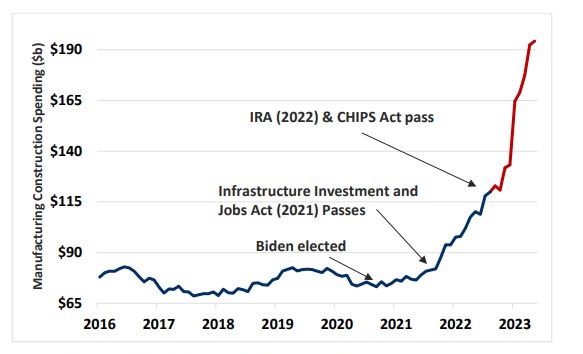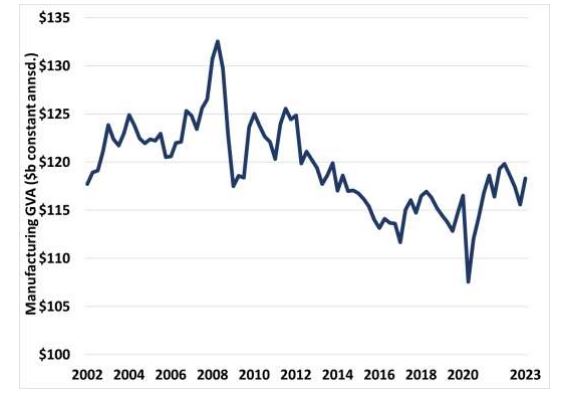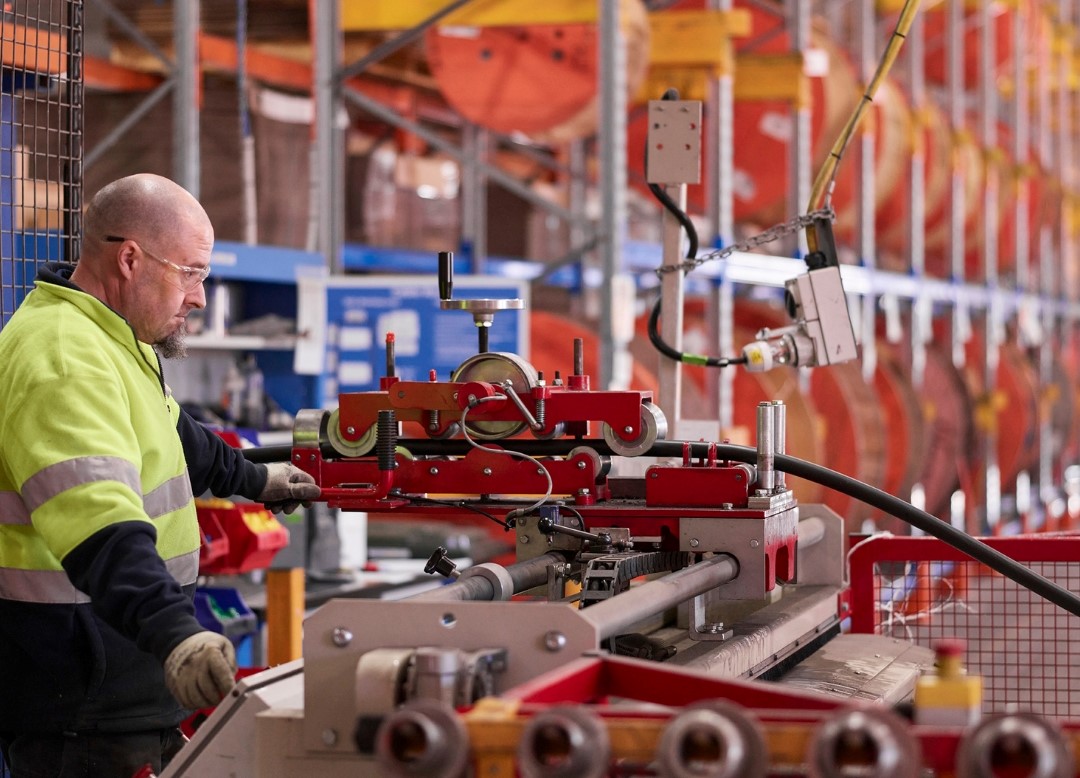A new report published by independent public policy think tank the Australia Institute warns Australia must respond urgently to powerful new incentives on offer for clean energy-related manufacturing in the United States and several other industrial countries, or risk losing its chance to leverage its renewable energy resources into lasting, diversified industrial development.
The 74-page report, released by the Canberra-based Australia Institute’s Centre for Future Work, notes there is an overseas manufacturing boom in the production of solar panels, batteries, electric vehicles, renewable energy generation and transmission equipment, and other renewable energy products.
Jim Stanford, Director of the Centre for Future Work and co-author of the report, said the boom is being driven by incentives provided by the U.S. government’s $500 billion (USD 369 billion) Inflation Reduction Act (IRA), and similar supports in the European Union, China, Japan, Korea, and Canada.
“The extraordinary response by industry to the U.S. measures confirms that these policies are having an outsized effect on the volume and location of sustainable manufacturing investment,” Stanford said.
“It also confirms that Australia must move quickly with its response to this new industrial landscape, or risk losing its chance to leverage our renewable energy resources into lasting, diversified industrial growth.”

Image: St. Louis Federal Reserve Bank, FRED Database
The Australian government has rolled out a raft of incentives aimed at taking advantage of the new renewable energy industrial revolution. These include the $1.9 billion Powering the Regions Fund, the $15 billion National Reconstruction Fund, and the $1.3 billion Modern Manufacturing Initiative which offers grant funding of up to 20 million to domestic manufacturing projects on a matched funding basis.
The Capacity Investment Scheme is another new initiative, first announced in December 2022 and funded in the 2023 budget. It aims to facilitate $10 billion in public and private sector investments in clean energy generation and storage. The 2023 budget also allocated $2 billion to the establishment of the Hydrogen Headstart program, an initiative to support investment in green hydrogen projects.
The report however suggests the federal government’s funding commitments are just a drop in the bucket and estimates Australia would need to commit $83 to $138 billion over 10 years in fiscal supports and incentives to match U.S. benchmarks for domestic renewable industry. This does not include the direct capital cost of renewable energy projects themselves.
Charlie Joyce, a research fellow at the Centre for Future Work and co-author of the report, said Australia has many advantages in the race for sustainable manufacturing, including an “unmatched endowment” of primary renewable energy sources, and ample deposits of critical minerals that are essential to production of renewable energy equipment.
While this would seem to give Australia a head-start in the race to grab a share of the lucrative new markets for manufactured products linked to renewable energy systems, Joyce said “decades of policy neglect for domestic manufacturing has left Australia’s industrial base in poor shape to seize the opportunities being opened up by the global energy transition.”

Image: Australia Institute
“The global race for clean technology manufacturing is well underway, and Australia is barely on the track,” Joyce said.
“If we don’t support domestic manufacturing to quickly enhance its production, skills, and technological capabilities, all that will happen is we will replace one set of unprocessed minerals: coal, oil and gas; with another: raw lithium and related critical minerals.”
“Without action, most of the spin-off benefits of the renewable energy revolution for industry, technology, value-added and diversification will pass us by.”
The authors acknowledged that the figures outlined in the report represent a major fiscal commitment, but said it is not out of reach for Australia.
“The common claim that Australia cannot afford to undertake measures that are proportionately equivalent to the IRA is not convincing,” they said.
“Enhancing Australia’s capability to produce the manufactured products required by the renewable energy revolution, and to position other manufacturing to take advantage of growing supplies of clean energy (such as green steel and aluminium production), would pay off in stronger economic and employment growth, less vulnerability to volatility in global fossil fuel markets, and a stronger political constituency to support the renewable energy transition.”
The report also lists several qualitative best practices that should be incorporated in the Australian response to the IRA, to generate maximum economic, social and environmental impact. These include these include strong labour and environmental standards attached to subsidised projects, public equity participation, and parallel investments in training for workers.
This content is protected by copyright and may not be reused. If you want to cooperate with us and would like to reuse some of our content, please contact: editors@pv-magazine.com.









By submitting this form you agree to pv magazine using your data for the purposes of publishing your comment.
Your personal data will only be disclosed or otherwise transmitted to third parties for the purposes of spam filtering or if this is necessary for technical maintenance of the website. Any other transfer to third parties will not take place unless this is justified on the basis of applicable data protection regulations or if pv magazine is legally obliged to do so.
You may revoke this consent at any time with effect for the future, in which case your personal data will be deleted immediately. Otherwise, your data will be deleted if pv magazine has processed your request or the purpose of data storage is fulfilled.
Further information on data privacy can be found in our Data Protection Policy.